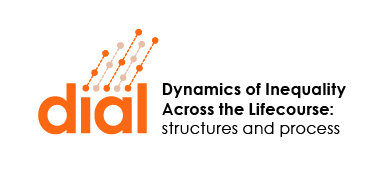This paper explores the ways in which Agent Based Modelling (ABM) can contribute to the study of LGBTQ lives, and conversely, how theory and insights from LGBTQ studies can inform the practice of ABM. In doing so, it introduces an example model of LGBTQ workplace inequality to illustrate several uses and challenges associated with research in this area.
The researchers reflect on how they went about developing their model to explore the emergence of intersectional workplace inequality among LGBTQ employees, taking into account the impact of several important mediating factors: social capital; different types of policy intervention aimed at workplace equality, diversity and inclusion (EDI); and LGBTQ people’s behavioural strategies in response to discrimination.
They argue that whilst ABM is suitable for exploring complex systems and heterogeneity in populations, there are some inherent tensions in synthesising intersectionality and queer perspectives. They also suggest some of the ways in which these tensions can be negotiated.
The researchers acknowledge that ABM is particularly suitable for comparing alternative theoretical or policy scenarios, and can be especially valuable in helping policymakers, but add that scepticism and wariness of ‘modelling’ or ‘quantification’ should be welcomed and challenged, as should any approach that requires making normative assumptions. The model developed is, they say, intended as an important starting point in developing the role of ABM in LGBTQ research and for bridging qualitative- and quantitative-derived insights.
They conclude that a conscious effort should be made in challenging these types of assumption when designing a model – through applying ‘queer moments’. Such an approach can not only draw research in unanticipated directions, it can also visually illustrate the very real impact such assumptions have on collected data. Furthermore, they hope that a renewed uptake of ABM across more diverse disciplines, including LGBTQ studies, should further promote a more pragmatic stance towards simplicity within the modelling community as methodological conventions adapt to meet new research challenges of inclusivity, representation, and intersectionality.
